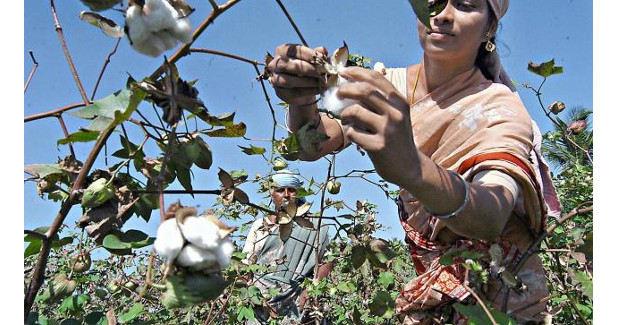
Is MSP unsettling cotton spinners?
The unsettling trade situation between the world’s leading cotton exporter, United States of America and a leading user, China, should place India’s cotton and textile sector in a better situation.
Indian cotton textile sector is at an important stage, given the trade situation between the two other leading cotton producing and trading countries. In addition to the above global picture, Indian government has recently hiked its support price for cotton by about 28 per cent.
The unsettling trade situation between the world’s leading cotton exporter, United States of America and a leading user, China, should place India’s cotton and textile sector in a better situation. Indian currency has been weakening against dollar, which should benefit textile exports. However, this positive sense is not felt by the textile industry in India.
Recently, the Indian government announced minimum support price (MSP) increase for important crops such as paddy and cotton to support farmers. While providing support to India’s farm sector is welcomed by agriculture, textile and allied sectors, there is some feeling in the textile sector that the support to the farm sector should have been provided by some other mechanism and not by market intervention schemes such as MSP, as this will increase the price of domestic cotton.
Will the spinners be in a position to absorb this price hike, questions S Velmurugan, general manager of a large cotton spinning mill in Aruppukottai, India. The mill in the South Indian town of Aruppukottai has about 70,000 ring spindles and produces fine count yarns catering to home textiles sector. While the industry benefited due to established presence as a leading yarn exporter and relatively cheaper skilled labour force, Velmurugan states that those advantages have been slowly eroding due to countries like Vietnam, Indonesia, etc. The MSP increase would make the raw material relatively expensive, which will impact the sector.
These current situations are making it clear that the Indian cotton sector should focus on increasing its productivity, improving its quality, working on its contamination levels and diversifying its strength. Enhancing its product basket, strengthening its downstream processing and developing value-added textile sectors such as technical textiles could offer near to long term benefits for India’s textile industry.




